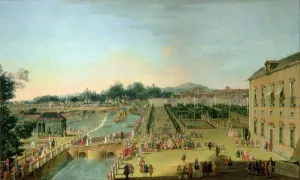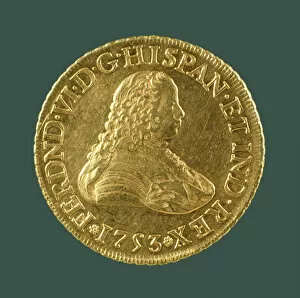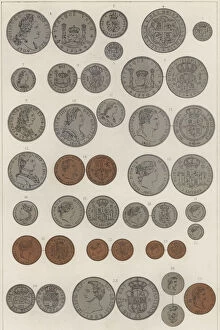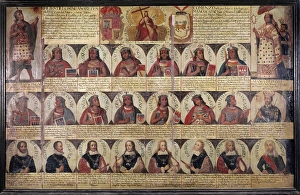Ferdinand Vi Collection
Ferdinand VI of Spain, born in 1713, was a significant figure during his reign from 1746 to 1759
All Professionally Made to Order for Quick Shipping
Ferdinand VI of Spain, born in 1713, was a significant figure during his reign from 1746 to 1759. This portrait by Jean Ranc in 1725 showcases the young king's regal presence and noble demeanor. In 1756, Ferdinand VI and his wife Barbara of Braganza were captured in a tender moment amidst the beautiful Aranjuez gardens. The love between them is evident as they stroll hand in hand, enjoying the serenity of nature. During his rule, Ferdinand VI minted coins like the onza or eight-escudos doubloon for America in 1753. These coins bore his image and symbolized Spain's influence across the Atlantic. As Philip V's son, Ferdinand VI inherited a kingdom that required careful governance. His dedication to ruling with integrity earned him respect among his subjects and contributed to stability within Spain. The tomb can be found in the Convent of the Royal Salesas, commissioned by Charles III as a final resting place fit for a monarch who had served his country dutifully. Coins minted by Kings of Madrid such as Philip V, Louis I, Ferdinand VI, Charles III, and Charles IV serve as tangible reminders of their respective reigns. Each coin tells its own story about Spanish history during this period. Artworks like "The Nonesuch" from around 1748 depict scenes that would have been familiar to King Ferdinand VI during his time on the throne. These pieces provide glimpses into everyday life at court and highlight cultural trends prevalent during this era. "The Family of Philip V (1683-1746) of Bourbon, " painted circa 1722 by an unknown artist using oil on canvas technique portrays important family ties within Spanish royalty before Ferdinand took over as king. Looking beyond Spain's borders towards Peru reveals an intriguing royal chronology beginning with Inca rulers.














